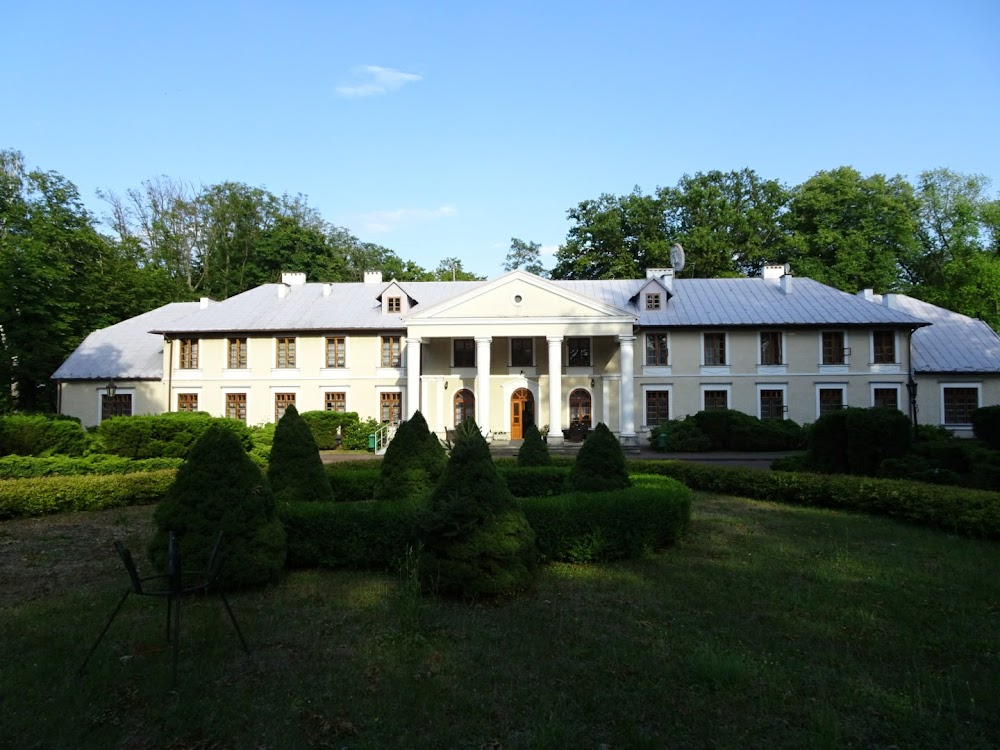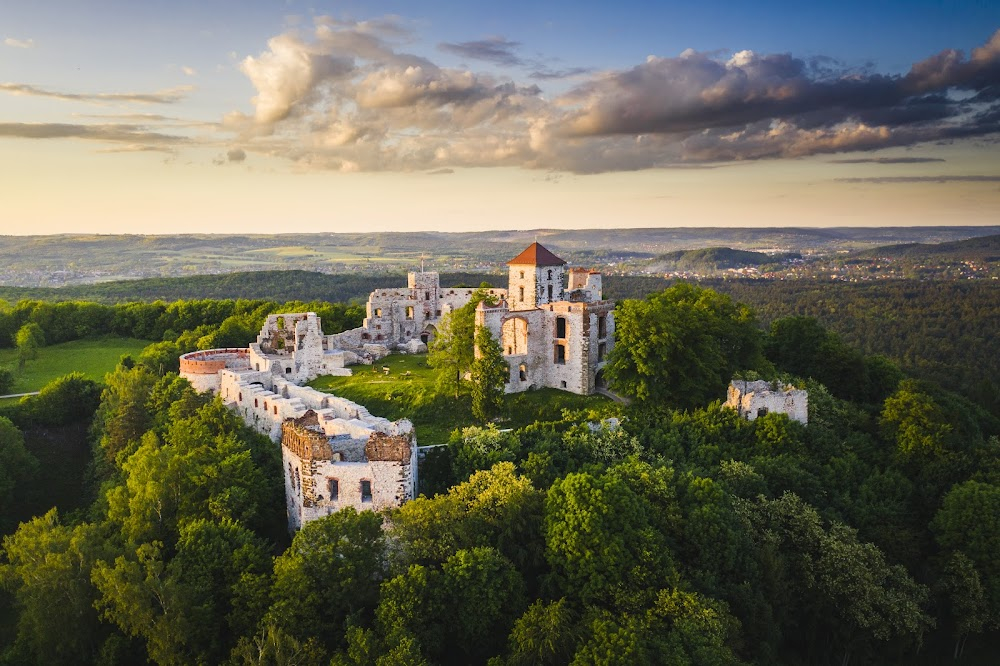Czarne chmury Filming Locations

Where was Czarne chmury filmed? Czarne chmury was filmed in 14 locations across Poland in the following places:
Czarne chmury Filming Locations
Rytwiany is a village in Staszów County, Świętokrzyskie Voivodeship, in south-central Poland. It is the seat of the gmina called Gmina Rytwiany. It lies on the Czarna Staszowska river, approximately 5 kilometres south-east of Staszów and 58 km south-east of the regional capital Kielce.
Aleksandrów Łódzki is a town in Zgierz County, Łódź Voivodeship, Poland. It is a part of the Łódź agglomeration. Aleksandrów Łódzki has an area of 13.82 square kilometres, and as of June 2022 its population was 22,160.
Olsztyn is a town in Częstochowa County, Silesian Voivodeship, in southern Poland. It is the seat of the gmina called Gmina Olsztyn. It lies in historic Lesser Poland, approximately 12 kilometres south-east of Częstochowa and 59 km north of the voivodeship capital Katowice. The village has a population of 2,331.
Kielce is a city in southern Poland and the capital of the Świętokrzyskie Voivodeship. In 2021, it had 192,468 inhabitants. The city is in the middle of the Świętokrzyskie Mountains, on the banks of the Silnica River, in the northern part of the historical Polish province of Lesser Poland.
Gmina Płaska is a rural gmina in Augustów County, Podlaskie Voivodeship, in north-eastern Poland, on the border with Belarus. Its seat is the village of Płaska, which lies approximately 20 kilometres east of Augustów and 88 km north of the regional capital Białystok.
Baranów Sandomierski is a small town in southern Poland, in the Subcarpathian Voivodship, Tarnobrzeg County on the Vistula River, with 1,420 inhabitants as of December 2021. Baranów lies near the Vistula river, along voivodeship road nr. 985, which goes from Tarnobrzeg to Mielec.
Kraków, a southern Poland city near the border of the Czech Republic, is known for its well-preserved medieval core and Jewish quarter. Its old town – ringed by Planty Park and remnants of the city’s medieval walls – is centered on the stately, expansive Rynek Glówny (market square). This plaza is the site of the Cloth Hall, a Renaissance-era trading outpost, and St. Mary’s Basilica, a 14th-century Gothic church.
Lublin is the ninth-largest city in Poland and the second-largest city of historical Lesser Poland. It is the capital and the centre of Lublin Voivodeship with a population of 336,339. Lublin is the largest Polish city east of the Vistula River, located 153 km to the southeast of Warsaw.
Łódź Voivodeship is a voivodeship of Poland. The province is named after its capital and largest city, Łódź, pronounced.
The Old Town is anchored by 19th-century Lublin Castle, incorporating the medieval Holy Trinity Chapel, with its Byzantine frescoes. Lubelska Trasa Podziemna is a network of underground passages featuring heritage displays, while the Trynitarska Tower offers views of the area’s pastel-hued buildings. Souvenir shops, traditional cafes known as “milk bars,” al fresco restaurants, and pubs line the cobbled streets.
Podlaskie Voivodeship is a voivodeship in northeastern Poland. The name of the province refers to the historical region of Podlachia, and part of its territory corresponds to that region. The capital and largest city is Białystok.
Tyniec is a historic village in Poland on the Vistula river, since 1973 a part of the city of Kraków. Tyniec is notable for its Benedictine abbey founded by King Casimir the Restorer in 1044.
Czarne chmury (1973)
Poland in the 17th century. Two army officers stand up to the ruling aristocracy and end up in prison.


